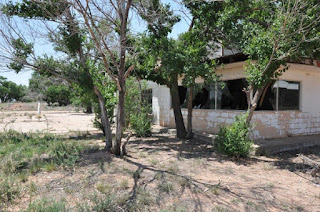 |
| Sam Bass (historical picture) |
There are many historical places right under our noses that we pay no attention to. Places some come from miles away to see, yet hundreds or even thousands of people living nearby never give the place a second's thought as they pass by. One of these places is in Dallas, Texas, or more specifically, Allen, which is a suburb of Dallas, but these two along with numerous other formerly little towns have grown so much over the years you can't tell where one stops and the other begins. No, we're not talking about where President John F. Kennedy was assassinated or where the TV show "Dallas" was filmed. We're talking about the notorious outlaw Sam Bass and the site of the first train robbery in Texas.
Sam was born in Mitchell, Indiana on July 21, 1851. Not much is known about his early life as it seems to have been a very normal, uneventful childhood. In early adulthood, he worked as a teamster, farmer and saloon owner, but failed in each of these endeavors.
 |
| Site of robbery in Allen, Texas |
In desperate financial straights, he joined a gang of outlaws which planned to rob a train in Nebraska. After getting the train stopped, the small, rather inept gang had found about $450 and turned to ride away when one of the men accidentally fell over a wooden box and heard a tinkling sound which came from within. Upon investigation, the tinkling sound turned out to be $20 gold pieces. The gang rode away with over $60,000 (about $1.5 million today). They had jus
t pulled off the largest train robbery in American history! Taking his share of the loot, Sam left the gang and made his way south to Texas.
Finding such success on his first illegal endeavor, Sam soon put together his own gang in Texas. On February 22, 1878, the gang held up the Galveston and Red River Railroad while it was stopped at the watering station in Allen. It was the first train robbery in Texas and netted the outlaws about $1,500. Over the next few months, Sam and his friends successfully pulled off four stage coach robberies and two more train robberies, all within 25 miles of Dallas.
Fearing the law and bounty hunters were on to them, the gang headed south out of Dallas with the intention of hiding out in Mexico. Needing funds to get there, they decided to rob a bank in Round Rock, Texas. Unfortunately for Sam, one of his trusted gang members had turned traitor and managed to get word to the Texas Rangers that the gang would soon be in Round Rock to rob the bank. Eight or nine Rangers were quickly dispatched to await the Bass gang's arrival.
 |
Just several blocks off a busy intersection,
but you wouldn't know it.
|
A day before robbing the bank, the gang was out of feed for the horses so Sam and two of his men went to the feed store for oats and corn. As they entered the store, two sheriff's deputy's named Moore and Grimes, happened to be standing on the wooden sidewalk across the street. Moore saw that Bass had a pistol into his waistband. The two deputies who had not yet recognized the men, went to investigate. Grimes walked up to Bass and asked him if he had a gun. Sam looked at him, said, "Yes, I do have a gun" and immediately pulled his pistol and shot Grimes dead. One of the other gang members shot Moore in the chest and all three ran out into the street toward their horses.
Texas Ranger Dick Ware was in the barber shop a few doors down getting a shave. At the first shot, he jumped out of the barber's chair and ran toward the commotion. He recognized Sam and got off a shot. With the help of Frank Jackson, one of the three gang members, the severely wounded Sam managed to get on his horse and ride away. It was only later that Ranger Ware realized he had shot the notorious Sam Bass while his face was still covered in shaving cream.
Early the next day, a posse was formed and began hunting the outlaws. In some woods not that far out of town, they had ridden past a tree when they heard a man they had not seen call out to them, "Here I am. I'm the man you are looking for." Sam was sitting down, propped up by the tree and barely alive. The posse loaded him on a horse and got him back to town where a doctor began treating him. It was too late though and Sam Bass, notorious outlaw and the man responsible for the first train robbery in Texas, died the next day, his 27th birthday.
The robbery occurred on the same tracks that run through Allen at the intersection of W. Main St. & S. Austin Dr. Today, the site is just a quiet little crossing near a neighborhood of nice, middle-class homes with no historical marker to memorialize it. The neighborhood's residents walk their dogs past, most not knowing and probably not caring that right where they stopped to let Rover do his business, history was made.
 |
Lady walking her dog on the quiet spot where the first
train robbery in Texas took place.
|





































